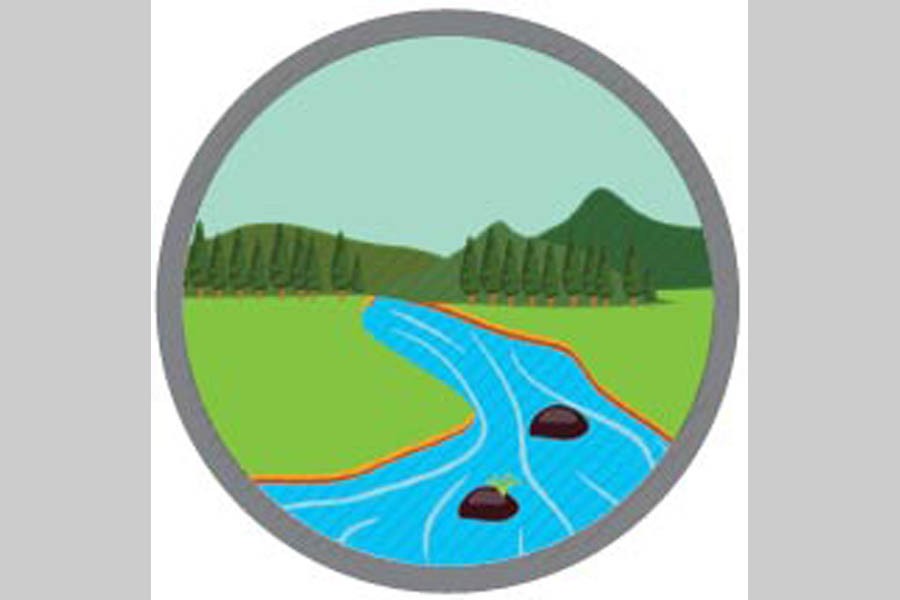The observance of the World Rivers Day, as customary on the 4th Sunday of September, last Sunday could not get over the ritualistic and archetypal. Banners, festoons, street marches and seminars marked the day but apart from members of a handful of organisations, some volunteers and media people, the rest of the people were hardly aware that such an event is observed annually since 2005. Even Bangladesh did not care to observe the day before 2010.
Clearly both the international community and this country came to realise quite late that the rivers on the planet actually hold the key to survival of human and other species -flora or fauna. Or else, how could the United Nations or any other body fail to accord rivers a recognition by setting aside a day for their celebration when there are events galore on far less insignificant issues and subjects?
In case of Bangladesh, rivers have assumed a far more importance than is rhetorically played to the gallery. Bangladesh had 1,400-1,500 rivers in the 11th century but the number has now come down to about 700. What is frightening is that only 100 of those boast navigability in all seasons and the rest have either shallow patches of water or simply dry up in the lean season. In 1971, the country had a total river route of 24,140 kilometre which has got reduced to just 3,800 km during the lean period.
If this is not enough, let's take up the issue of pollution. About 11 per cent of Bangladesh rivers receive industrial waste. Of the 1.6 million tons of fertilisers and 4,000-5,000 tons of pesticides used in agriculture, a substantial portion gets washed away by floodwaters or rains into the river system. Also human and animal excreta, decomposed organic bodies etc.; contribute to the pollution in no small way.
The rivers flowing by and around urban settlements are the victims of worst encroachment and pollution. The Buriganga, Balu, Turag, Bangshi, Sitalakhya, Dhaleswari which either girdle the capital city or located just not very far from it are getting stifled by the aggressive pollution. The lifelines are on the verge of getting snapped. In the monsoon, the quality of these rivers improves to some extent but in the lean season, water flows lose steam and pollution becomes so heavy that no living organism can survive particularly in the Buriganga water.
It is against such a precarious condition of rivers, the High Court (HC) took due cognizance of an application by a rights organisation to save the Turag considered in its last gasp of breath. In a landmark judgment the HC accorded the Turag the status of a living entity or a juristic personality. The recognition was then extended to all other rivers in the country. It surely was a giant mental leap one must measure up to. The first case of accreditation of living entity was bestowed on a river in New Zealand where the indigenous Maori people's mystic belief found an echo in the scientific compulsion for river protection.
On that count, the HC has cleared the way for treating rivers in a way a human being must be respected legally. Clearly, encroachment and pollution have to be considered a crime. If a human being according to the UN charter enjoys a slew of 28 rights, so should a river. But the fact is that a river's status as a living entity is more symbolic than practical. This does not however lessen the importance of protecting rivers - any river - from grabbers and polluters, the heaviest of whom are influential people damaging rivers for commercial purposes.
Actually the dire situation led the HC to come up with a verdict like this as explained by it at the time of delivering the judgment. So the bottom line is that not enough has been done as yet to save the country's river. However, some positive developments have taken place since the HC ruling. The Bangladesh Inland Water Transport Authority (BIWTA) has demonstrated some resolve to free river banks from illegal occupation. Multi-storied buildings built by powerful quarters were demolished this time under an expansive and extensive eviction drive. Yet, much more needs to be done. The boundary pillars posted along the Buriganga during the lean season has allegedly been done in collusion with local influential people. It would be wise to demarcate the boundary afresh on the basis of old land records.
The fact that a list of 45,148 land grabbers in 60 districts has been prepared and submitted by the deputy commissioners (DCs) to the National River Conservation Commission is a positive development. Lists from the rest four are due. How flawlessly the lists of grabbers of rivers and canals have been prepared is a concern no doubt but at least the 50,000 or so grabbers in a nation of about 160 million form a small minority. If the nation decides that the grabbers have to be evicted and punished for their illegal acts, it should happen. Only the administration must move the legal motion against them and things will fall in place. The drive against criminal elements within the ruling party makes one optimistic that the administration can play its role in a neutral manner. If this happens, the rivers can be freed from encroachment and pollution albeit not immediately at least in the near future.


